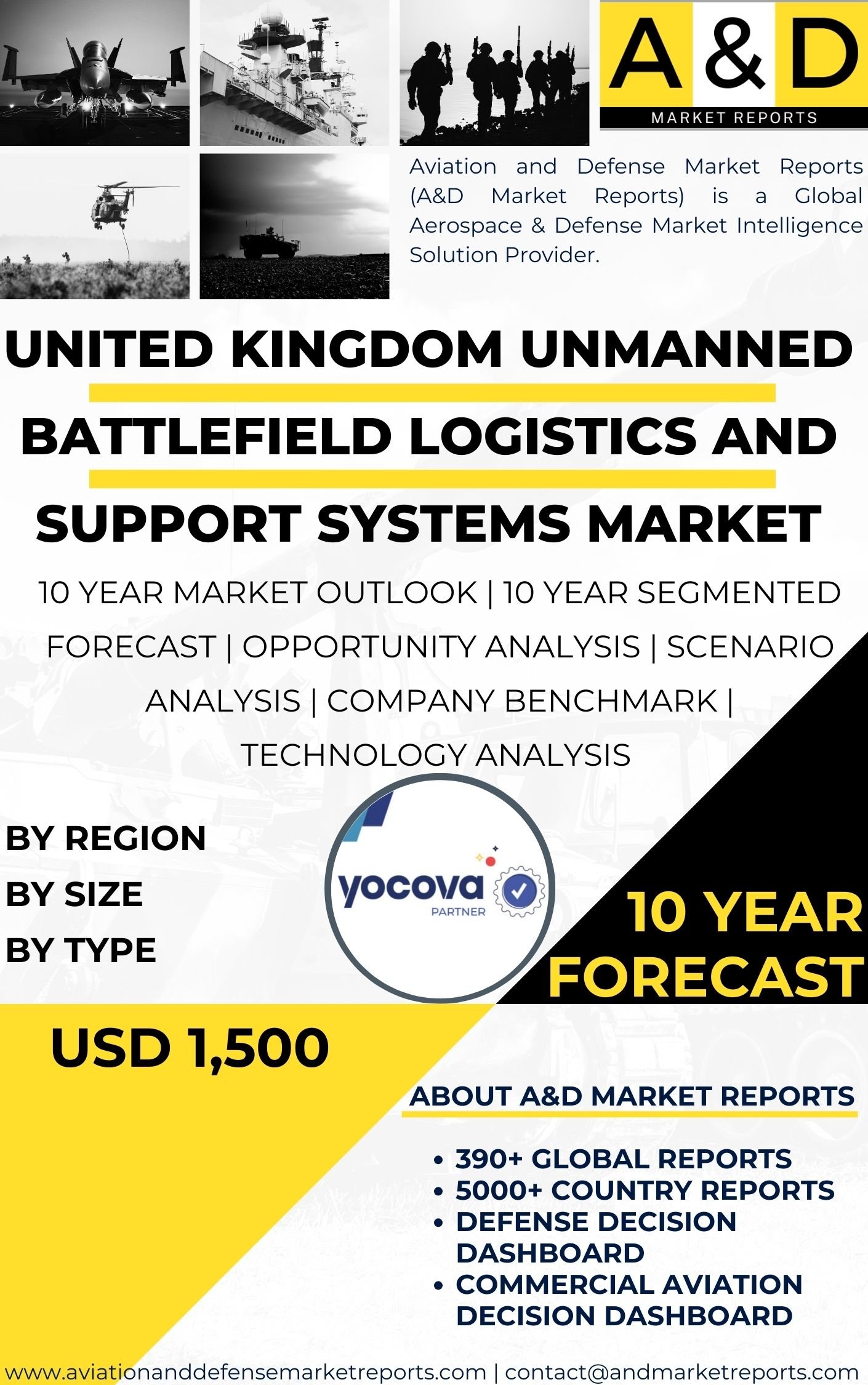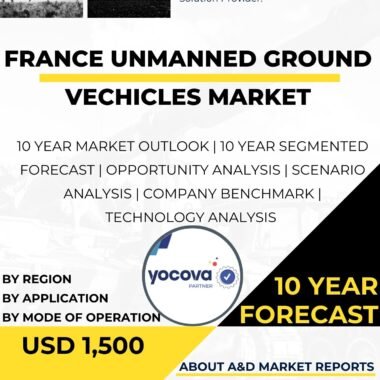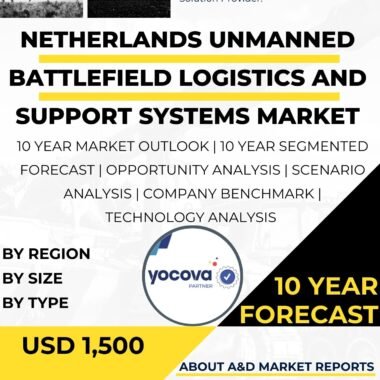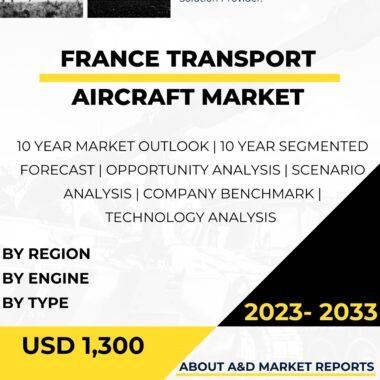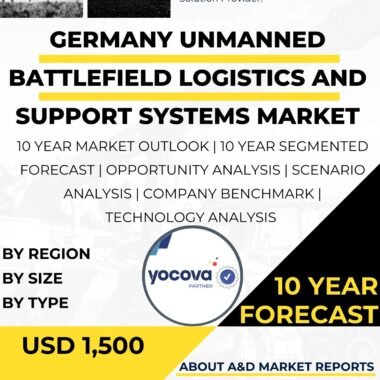Description
Overview of the UK Unmanned Battlefield Logistics and Support Systems Market
The United Kingdom Unmanned battlefield is a rapidly growing segment that plays a critical role in enhancing operational efficiency and force protection across the armed forces. These unmanned platforms are designed to deliver supplies, equipment, and critical support services directly to troops operating in high-risk and remote environments. By automating dangerous or labor-intensive tasks, they reduce risks to personnel and ensure faster, more reliable mission support under challenging conditions. Their deployment in modern military operations demonstrates the UK’s commitment to leveraging technology to maintain strategic advantage while improving battlefield readiness.
History and Growth of the UK Unmanned Battlefield Logistics and Support Systems Market
The market has experienced consistent growth as the UK government and private defense industry increasingly invest in autonomous platforms. Historically, the UK began exploring unmanned systems to improve battlefield efficiency and reduce soldier casualties, but recent advancements in robotics, artificial intelligence, and autonomous navigation have accelerated development. Collaborative initiatives between the Ministry of Defence and leading defense manufacturers have produced versatile solutions capable of meeting evolving military needs. This growth reflects the UK’s long-term commitment to integrating unmanned capabilities into its operational doctrine, ensuring that ground forces have safer, faster, and more adaptable logistical support.
Applications in the UK Unmanned Battlefield Logistics and Support Systems Market
Unmanned systems in the UK support a wide range of operational scenarios, including battlefield resupply, casualty evacuation, reconnaissance, surveillance, and communications support. Beyond combat operations, these systems are also deployed in humanitarian missions, disaster relief, and emergency response operations where human access is limited or dangerous. Their ability to operate in harsh terrain, extreme weather, or contested environments increases their strategic value. The versatility and adaptability of these platforms make them indispensable assets for both military and dual-use civilian operations, offering consistent performance under diverse conditions.
Technology in the UK Unmanned Battlefield Logistics and Support Systems Market
Modern unmanned battlefield logistics systems rely on cutting-edge technologies that enhance operational performance and resilience. Autonomous navigation allows vehicles to maneuver safely without continuous human control, while artificial intelligence and robotics enable real-time decision-making in unpredictable scenarios. Integrated sensor systems provide situational awareness, obstacle detection, and terrain mapping, which improve both efficiency and mission safety. Communication networks link unmanned platforms to command-and-control centers, allowing operators to monitor status and coordinate operations. Together, these technologies ensure high reliability, responsiveness, and adaptability in the field.
Operational Benefits and Flexibility
The operational advantages of unmanned logistics systems are substantial. By taking on high-risk supply tasks, these systems reduce physical strain and exposure to danger for military personnel. They also increase operational flexibility, enabling commanders to extend their reach, respond quickly to changing battlefield dynamics, and allocate human resources more efficiently. Improved situational awareness and timely delivery of critical materials enhance decision-making and support coordinated missions. Overall, unmanned logistics systems give the UK military a significant tactical and operational advantage by streamlining operations while minimizing vulnerabilities.
Interoperability in the UK Unmanned Battlefield Logistics and Support Systems Market
Unmanned systems are most effective when fully integrated with other military assets. In the UK, these platforms are designed to work seamlessly with command-and-control networks, manned vehicles, drones, and communication systems. Such interoperability ensures coordinated, synchronized operations, whether in joint-force deployments or multinational exercises. It also facilitates real-time information sharing and mission adaptability, enabling unmanned systems to support larger operational strategies. Effective integration enhances reliability, improves operational tempo, and ensures the UK can maintain high readiness in complex mission environments.
Continuous Innovation and Industry Development
The UK unmanned battlefield logistics and support systems market is driven by continuous research, development, and innovation. Manufacturers focus on improving autonomy, operational range, payload capacity, and system durability. New mission profiles are explored, including automated resupply under contested conditions and integration with next-generation robotic platforms. Continuous advancement ensures that systems remain capable against evolving threats, technological challenges, and changing operational requirements. The UK’s focus on innovation keeps it competitive globally while ensuring its armed forces have access to the most advanced unmanned solutions available.
Training and Expertise Requirements
Skilled personnel are essential for the successful deployment of unmanned logistics systems. Operators must understand mission planning, autonomous system functionality, and safety procedures, while technicians are responsible for maintenance, troubleshooting, and system upgrades. Comprehensive training programs ensure personnel can adapt to rapidly evolving technology and complex battlefield environments. A well-trained workforce enhances system reliability, operational efficiency, and mission success, making human expertise a critical complement to advanced autonomous platforms.
Strategic Considerations for Deployment
Integrating unmanned logistics systems into the UK’s defense strategy requires careful planning and foresight. Planners evaluate mission suitability, operational risks, and long-term impact on force readiness. They consider how unmanned systems complement traditional logistics, improve sustainability, and maintain operational advantage under future combat scenarios. Strategic deployment ensures the UK maximizes the effectiveness of these systems while maintaining safe, efficient, and ethically responsible operations.
Key Challenges in the UK Unmanned Battlefield Logistics and Support Systems Market
Despite rapid growth, the market faces several challenges. Continuous investment in research and development is essential to keep pace with emerging technologies and countermeasures. Threats from cyber attacks and electronic warfare require robust security solutions to prevent disruption or compromise of autonomous systems. Additionally, integrating unmanned platforms with existing military procedures and infrastructures can be complex. Addressing these challenges is critical to ensuring operational resilience and continued adoption of unmanned logistics capabilities.
Ethical and Legal Requirements
The use of unmanned logistics systems in the UK is governed by strict ethical and legal frameworks. All operations comply with international humanitarian law, human rights regulations, and national defense standards. These guidelines ensure that autonomous platforms are deployed responsibly, preventing harm to civilians and minimizing unintended consequences. Ethical compliance builds trust in unmanned systems, both within the military and among the public, and supports long-term adoption and acceptance of these technologies.
Conclusion
The UK unmanned battlefield logistics and support systems market is a vital component of modern military operations. These systems increase operational efficiency, enhance battlefield safety, and provide reliable support under difficult conditions. Continued technological innovation, skilled personnel, strategic integration, and ethical deployment will guide the market’s growth. By investing in advanced unmanned platforms and maintaining secure, reliable operations, the UK is poised to strengthen its defense capabilities while meeting the demands of modern warfare and humanitarian operations.
